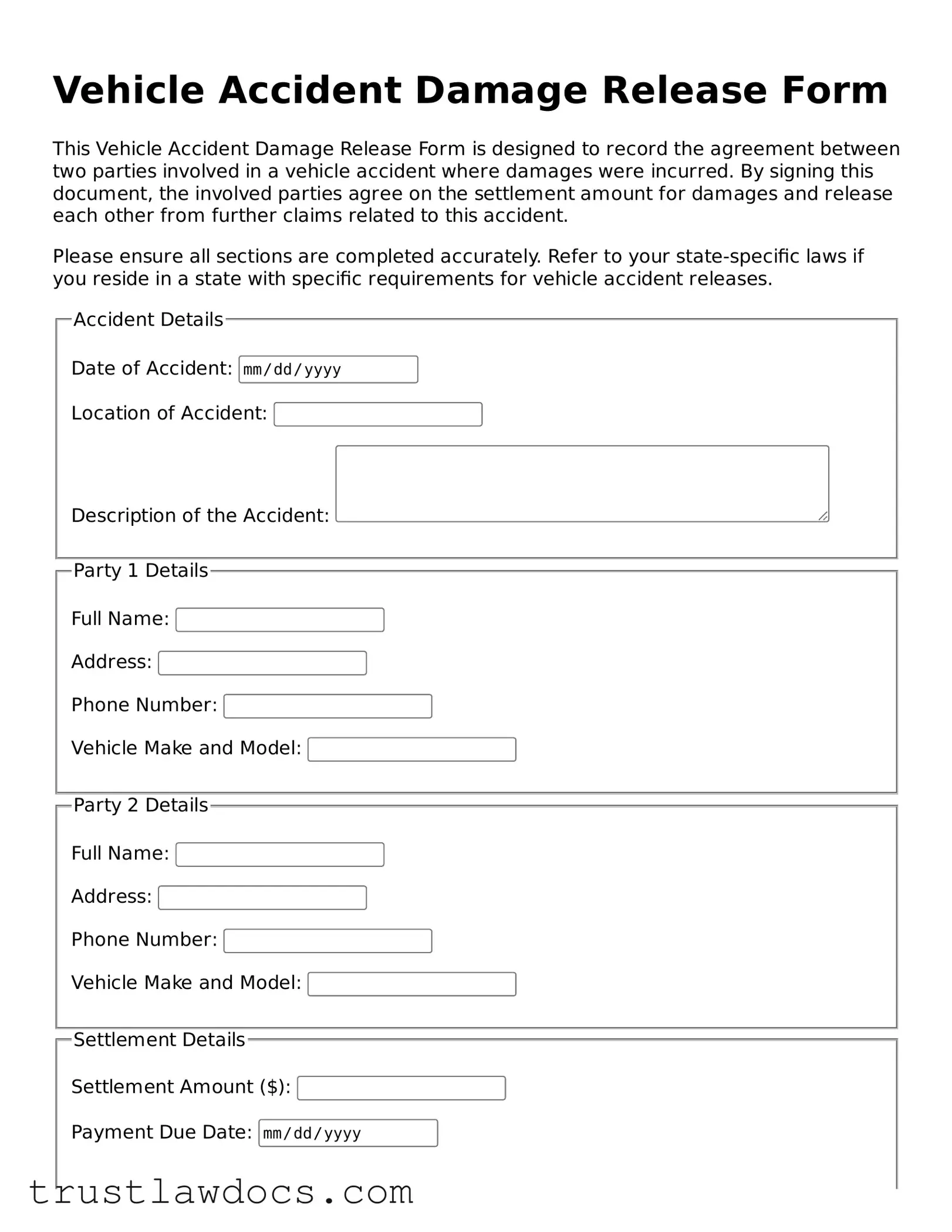When involved in a vehicle accident, the aftermath involves a series of steps critical for legal and insurance purposes. One of these steps includes filling out the Vehicle Accident Damage Release form. This document is crucial as it can affect claims and settlements. Sadly, many people make mistakes in this process due to stress, confusion, or simply not understanding the importance of the details. Notably, some errors stand out for their frequency and impact.
Firstly, a common mistake is not thoroughly reviewing the form before signing. In the rush to resolve the situation, people often skim rather than read in detail. This oversight can lead to agreeing to terms that are not in the individual's best interest, or, worse, relinquishing rights they weren't aware of. Ensuring that all the information is accurate and understanding every clause is essential before adding one's signature to the document.
Secondly, inaccurately describing the accident or the extent of the vehicle's damage is another frequent error. The description section is crucial for insurance claims and legal purposes. A misrepresentation, whether intentional or not, can significantly affect the outcome of claims and potential reparations. It's imperative to be as precise and truthful as possible, even if it requires a bit longer to get the details right.
Failure to include pertinent information is yet another mistake. This could range from omitting contact information for witnesses, not providing a detailed account of damages, or leaving out any agreements made with the other party involved in the accident. Every piece of information contributes to a comprehensive understanding of the incident, and its absence can lead to complications down the line.
Misunderstanding liability and what signing the form entails can also lead to regrets. Some individuals might not fully grasp that by signing the form, they could be agreeing to not pursue further claims regarding the accident. This misunderstanding can result in unexpectedly forfeiting rights or compensation. It's crucial to seek clarification on any legal language on the form that isn't completely understood.
Additionally, not providing a copy of the form to all involved parties, including one's own insurance company, can lead to a breakdown in communication and processing of claims. This error might delay repairs, compensation, or essential support needed after the accident. Promptly sharing copies with everyone involved ensures that all parties are informed and can act on the documented information.
Lastly, rush-filling the form without considering future implications or consulting with a legal professional or insurance agent is a mistake. This step, though seemingly trivial in the moment, can profoundly affect legal standings or financial compensations later on. Seeking advice or at least taking the time to reflect on the information provided before finalizing the form can avoid many potential issues.
In sum, the process of completing the Vehicle Accident Damage Release form holds more weight than it might appear at first glance. A careful approach, reflective of the document's significance, can help avoid common pitfalls, ensuring one’s rights and financial interests are better protected following a vehicle accident.
